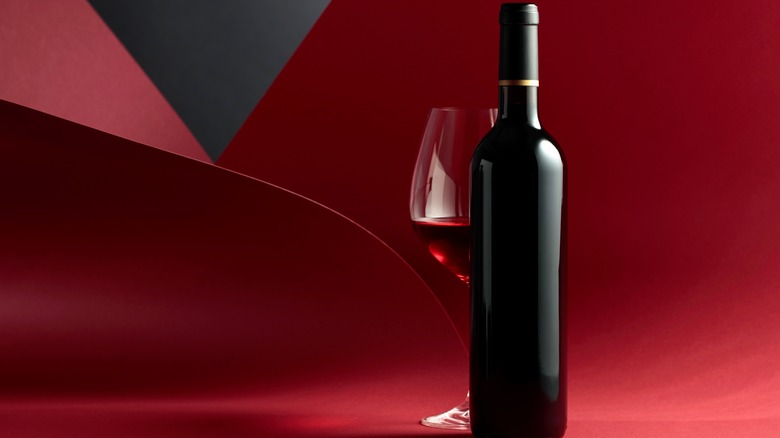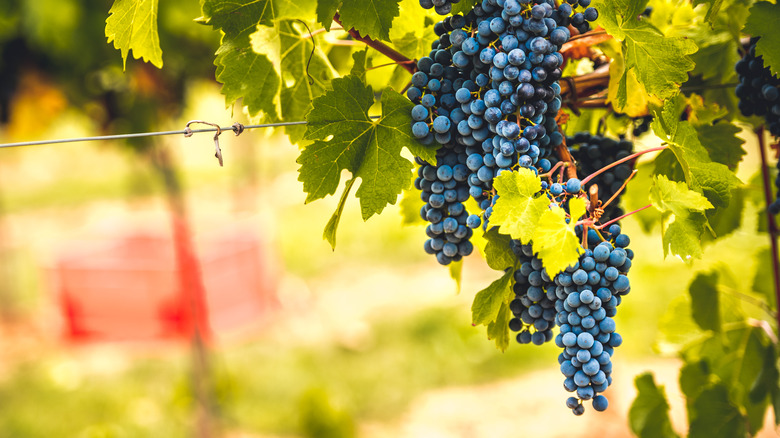Here's How Red Wine Actually Gets Its Color
Just as producing quality wine is an art form, choosing one is no less a skill unto itself. A good wine can take an average meal and elevate it to superb standards. At the same time, a poorly chosen bottle can clash with a dish and taint your entire dining experience.
There is much more detail to the color of a wine than you might think. According to Judge Dumas, an international wine judge, the three key factors to consider when grading a wine are taste, aroma, and color. While the first two are self-evident, learning about the colors of wine and what they tell us can be a little more complicated. However, with knowledge comes power and the power to choose the proper wine is a worthwhile pursuit.
White wines are simpler to produce and review, as they skip the one step that makes red wines red. That single step makes all the difference in the world, or at least in the world of wine.
How is a red wine produced
Despite what many believe, you cannot produce red wine from white grapes. There is a crucial ingredient in red or purple grapes that is necessary to make red wine. Lacking this one family of chemicals makes it impossible for white grapes to produce red wine, and you'll find them in the skin of the grapes. They are called polyphenols, and according to Healthline, anthocyanin is the main one we find in dark grapes. This group of compounds is also one reason why dark grapes are so healthy.
Wine Enthusiast Magazine presents the entire red wine production process in a reasonably detailed manner. For the sake of brevity, we will keep this simple. Red grapes are gathered from the field and crushed to produce what wineries call "the must." After crushing, they add yeast and sometimes sugar to the must and allow the mixture to ferment in a vat. Only after the initial aging process is the mixture of juice and rinds pressed to separate the majority of solids from the liquid. From there, the fluid gets placed in large containers to age. These can take many different forms depending on the winery's process.
After aging, the new wine goes through racking chambers, where any remaining solids are allowed to settle for removal. Now, all that is left to do is bottle the wine.
Why is red wine red
As mentioned, the secret to how red wine actually ends up red is in the skin of the grapes. The American Journal of Enology and Viticulture states that red wine gets its color and much of its characteristic taste from tannins, anthocyanin pigments, and flavonoids that originate or develop in the skin of the grapes during the fermentation process.
While it's primarily the anthocyanin that contributes to the reddish hue of red wine, other factors can come into play. From The Encyclopedia of Food Chemistry, we learn that the growing conditions, as well as the ripeness of the grapes, can affect how much color the skin imparts to the grapes.
Other major factors in the color and taste of wine are pH and age. The more acidic a bottle of wine is, the more astringent or dryer it will be on your pallet. GuildSomm reports that the longer a wine is aged, the bluer its color will be. Red wines with a lower pH tend to be redder, while those with lower acidity will have a purplish hue and be sweeter red wines.
It's amazing all you can learn from watching wine as it flows into a glass. That is, provided you have the right knowledge.


